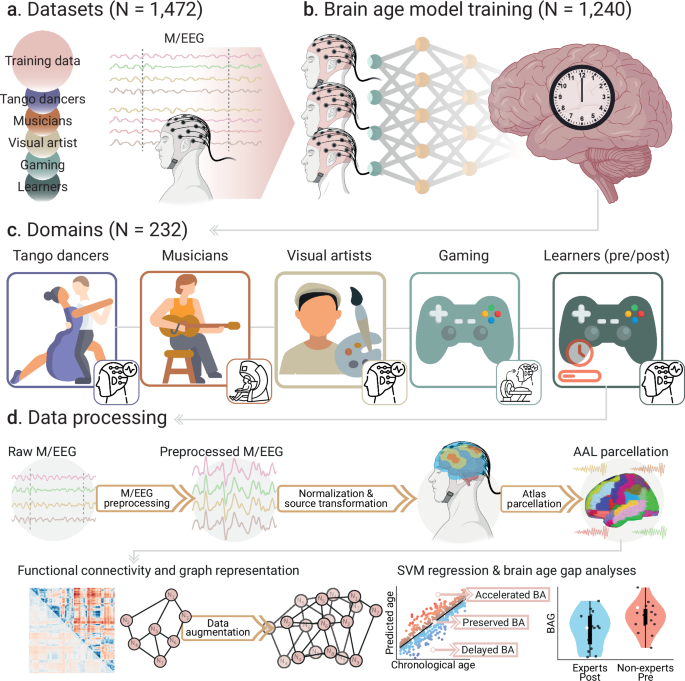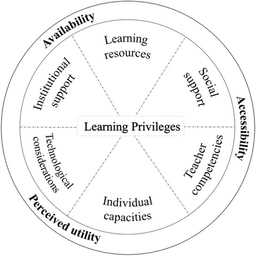Video games and brain health in the modern age
Published in Social Sciences, Bioengineering & Biotechnology, and Neuroscience

Brain health in the digital era
Traditionally, video games were regarded as leisure activities, enjoyable ways to relax or connect with others, with little consideration for their impact on brain health. Moreover, gaming disorders have been linked to adverse mental health outcomes and addictive behavior. Yet under the broad umbrella of “gaming” lies a diverse ecosystem of experiences: from fast-paced action and intricate strategy to narrative-driven adventures and problem-solving puzzles. Each genre engages different cognitive systems and, as recent research suggests, can shape the brain in distinct ways.
There are at least two routes through which video games may benefit brain health. The first is psychological: gaming as an activity that promotes imagination, planning, and complex decision-making. During the COVID-19 pandemic, a study in Japan involving more than 90,000 participants found that moderate gameplay was associated with improved mental health and reduced stress. During the lockdown, digital play became a form of social connection and emotional release, a virtual meeting ground when physical proximity was impossible. The second route is biological and grounded in neural plasticity. Certain types of video games, especially those that demand imagination, sustained attention, rapid decision-making, and cognitive flexibility, appear to stimulate neural plasticity –the brain’s remarkable capacity to reorganize its connections in response to learning and experience.
Video games and neural plasticity
One of the most intriguing insights to emerge from cognitive neuroscience is that video games can act as laboratories for studying neural plasticity. Seminal work by pioneers in the field revealed that action video games are not cognitively inert. Rather, they sharpen attention, improve visual acuity, and remodel brain networks involved in top-down control. These effects are especially pronounced in the frontoparietal and parieto-occipital networks, regions responsible for attentional shifting, sensory integration, and decision-making. Interestingly, the frontoparietal network is also one of the first systems to decline with age. If gaming experience strengthens this network, it might counteract the neural vulnerabilities associated with aging. What began as a tool to study perception and attention could, unexpectedly, illuminate pathways to resilience in the aging brain.
Behind the results
To test if experiences with video games can preserve brain health, we developed a “brain clock” model, which we published in Nature Communications. We used magneto- and electroencephalography (MEG/EEG) data from over 1,400 participants across multiple countries. The approach combined experts and non-experts in different domains, from professional StarCraft II players to novices who completed a 30-hour training program in the same game. StarCraft II, a real-time strategy (RTS) game developed by Blizzard Entertainment, demands simultaneous management of resources, army units, spatial intelligence, and tactical foresight, all under severe time pressure. It is, in many ways, a cognitive symphony of multitasking. Using the brain clocks, we computed the difference between predicted and chronological age, known as the brain-age gap (BAG), which served as an index of brain health. Experienced StarCraft II players had younger brains (lower BAGs) than their chronological age. Moreover, naïve participants who underwent training showed measurable reductions in their BAGs after just 30 hours of gameplay.
This is neural plasticity in action. We also found that video game experiences reinforced brain connections vulnerable to age (i.e., the frontoparietal network), increased network efficiency, and increased global connectivity strength. This means that specialized processing of information might be improved because of video gaming, overlapping with brain areas vulnerable to aging. Further, the protective effects of games (the reduction of BAGs) scaled with the immersion and quality of the experiences –in other words, the more experienced participants had younger brains. We suggested, in general, that the experiences themselves can protect the brain through neural plasticity mechanisms.
Breaking the stigma
When we talk about video games, two common images come to mind. The first is the passive player, a kid or a teenager slouched on a couch, “wasting time” in front of a screen. Yet if we replaced the controller with a chessboard or a novel, our moral judgment might change. We easily forget that both reading and gaming are forms of symbolic play and learning. Just as there are bad books, there are unproductive games, but not all games are created equally. The second image concerns who plays. Contrary to stereotype, the average gamer is around 36 years old, not a child. Gaming is now a mainstream cultural activity that spans generations. Recognizing this, we can begin to see video games not as threats to cognition but as opportunities to harness engagement, attention, and motivation for cognitive and health purposes. However, not all gaming is beneficial. Excessive or compulsive play can harm mental and physical health, as gaming addiction has been associated with mental health problems. However, the causality may run the other way, with factors associated with gaming addiction reflecting underlying mental-health conditions such as anxiety and depression.
Moderation remains key. Brain health is holistic, and it depends on sleep, exercise, diet, social connection, and, in general, the elements of our social exposome. With careful design and moderation, games can become complements to traditional care. Indeed, we demonstrated this point with the training study, where results suggested that people can benefit from short-term exposure to some video games. Cognitive training games, rehabilitation platforms, and “gamified” educational tools are already being integrated into schools, clinics, and wellness programs. The principle is simple but powerful: if learning or therapy can be made as engaging as play, adherence and outcomes improve. Within this broader ecosystem, video games can serve as valuable, science-based allies beyond their role as a source of entertainment.
AI has designed the poster figure under the supervision of the authors.
Follow the Topic
-
Nature Communications

An open access, multidisciplinary journal dedicated to publishing high-quality research in all areas of the biological, health, physical, chemical and Earth sciences.
Your space to connect: The Psychedelics Hub
A new Communities’ space to connect, collaborate, and explore research on Psychotherapy, Clinical Psychology, and Neuroscience!
Continue reading announcementRelated Collections
With Collections, you can get published faster and increase your visibility.
Women's Health
Publishing Model: Hybrid
Deadline: Ongoing
Advances in neurodegenerative diseases
Publishing Model: Hybrid
Deadline: Dec 24, 2025



Please sign in or register for FREE
If you are a registered user on Research Communities by Springer Nature, please sign in